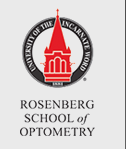Medical Subject Headings
Conjunctival diseases; Conjunctival neoplasms; Pterygium of Conjunctiva And Cornea
Abstract
Background: Gelatinous, vascularized lesions of the conjunctiva are a subset of ocular surface tumors that are derived from various cell types. The more worrisome origins include diagnoses of conjunctival intraepithelial neoplasia (CIN) and squamous cell carcinoma (SCC). Topical treatments such as mitomycin-C, 5-fluorouracil, and interferon alfa-2b are now used as single therapy or in conjunction with surgical excision.
Case Report: This case features a 78-year-old Caucasian male with CIN treated with surgical removal and topical interferon alfa-2b. In addition to discussing the details of this case, this report highlights important caveats of the treatment and management of the condition as well as a review of ocular surface squamous neoplasia.
Conclusion: Clinical observation of a conjunctival lesion can assist with determining severity and includes documentation of the size, shape, and consistency of the lesion, presence of a feeder vessel (indicating a more advanced ocular surface lesion), and anatomical location. The clinician can determine if the lesion is wholly within the conjunctiva or fixed to the globe by simple physical manipulation of it.Gonioscopy can provide the clinician with information regarding intraocular angle and posterior cornea involvement. Additional testing such as B-scan, anterior segment OCT, and MRI can provide additional information about the invasiveness of such lesions. Depending on the surgeon’s preference, excision and cryotherapy, topical monotherapy, or a combination treatment may be used in these cases. Prognosis is favorable in most cases if treated early and there is limited recurrence.
Recommended Citation
Bugajski C. Conjunctival Intraepithelial Neoplasia: A Case Report. Optometric Clinical Practice. 2021; 3(2):51. https://doi.org/10.37685/uiwlibraries.2575-7717.3.2.1022
Creative Commons License

This work is licensed under a Creative Commons Attribution 4.0 International License.
Digital Object Identifier (DOI)
10.37685/uiwlibraries.2575-7717.3.2.1022
Included in
Adult and Continuing Education and Teaching Commons, Health and Physical Education Commons, Optometry Commons, Other Education Commons, Other Medicine and Health Sciences Commons, Other Teacher Education and Professional Development Commons

